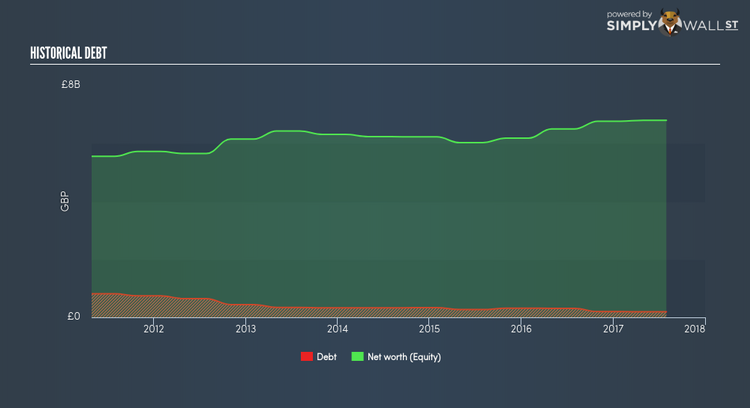Is Kingfisher plc’s (LON:KGF) Balance Sheet Strong Enough To Weather A Storm?

Kingfisher plc (LSE:KGF), a large-cap worth £7.56B, comes to mind for investors seeking a strong and reliable stock investment. Big corporations are much sought after by risk-averse investors who find diversified revenue streams and strong capital returns attractive. However, the health of the financials determines whether the company continues to succeed. This article will examine Kingfisher’s financial liquidity and debt levels to get an idea of whether the company can deal with cyclical downturns and maintain funds to accommodate strategic spending for future growth. Note that this information is centred entirely on financial health and is a high-level overview, so I encourage you to look further into KGF here. View our latest analysis for Kingfisher
How much cash does KGF generate through its operations?
Over the past year, KGF has reduced its debt from £317.0M to £198.0M , which comprises of short- and long-term debt. With this debt repayment, KGF currently has £795.0M remaining in cash and short-term investments , ready to deploy into the business. Moreover, KGF has produced £781.0M in operating cash flow in the last twelve months, resulting in an operating cash to total debt ratio of 394.44%, meaning that KGF’s debt is appropriately covered by operating cash. This ratio can also be a sign of operational efficiency as an alternative to return on assets. In KGF’s case, it is able to generate 3.94x cash from its debt capital.
Can KGF meet its short-term obligations with the cash in hand?
Looking at KGF’s most recent £2,739.0M liabilities, the company has been able to meet these obligations given the level of current assets of £3,561.0M, with a current ratio of 1.3x. For Specialty Retail companies, this ratio is within a sensible range since there’s sufficient cash cushion without leaving too much capital idle or in low-earning investments.
Can KGF service its debt comfortably?
Debt-to-equity ratio standards differ between industries, as some are more capital-intensive than others, meaning they need more capital to carry out core operations. A ratio below 40% for large-cap stocks is considered as financially healthy, as a rule of thumb. KGF’s level of debt is low relative to its total equity, at 2.81%. This range is considered safe as KGF is not taking on too much debt obligation, which can be restrictive and risky for equity-holders. We can test if KGF’s debt levels are sustainable by measuring interest payments against earnings of a company. Ideally, earnings before interest and tax (EBIT) should cover net interest by at least three times. For KGF, the ratio of 40.67x suggests that interest is comfortably covered. High interest coverage is seen as a responsible and safe practice, which highlights why most investors believe large-caps such as KGF is a safe investment.
Next Steps:
KGF’s high cash coverage and low debt levels indicate its ability to utilise its borrowings efficiently in order to generate ample cash flow. In addition to this, the company exhibits proper management of current assets and upcoming liabilities. Keep in mind I haven’t considered other factors such as how KGF has been performing in the past. You should continue to research Kingfisher to get a more holistic view of the stock by looking at:
1. Future Outlook: What are well-informed industry analysts predicting for KGF’s future growth? Take a look at our free research report of analyst consensus for KGF’s outlook.
2. Valuation: What is KGF worth today? Is the stock undervalued, even when its growth outlook is factored into its intrinsic value? The intrinsic value infographic in our free research report helps visualize whether KGF is currently mispriced by the market.
3. Other High-Performing Stocks: Are there other stocks that provide better prospects with proven track records? Explore our free list of these great stocks here.
To help readers see pass the short term volatility of the financial market, we aim to bring you a long-term focused research analysis purely driven by fundamental data. Note that our analysis does not factor in the latest price sensitive company announcements.
The author is an independent contributor and at the time of publication had no position in the stocks mentioned.

